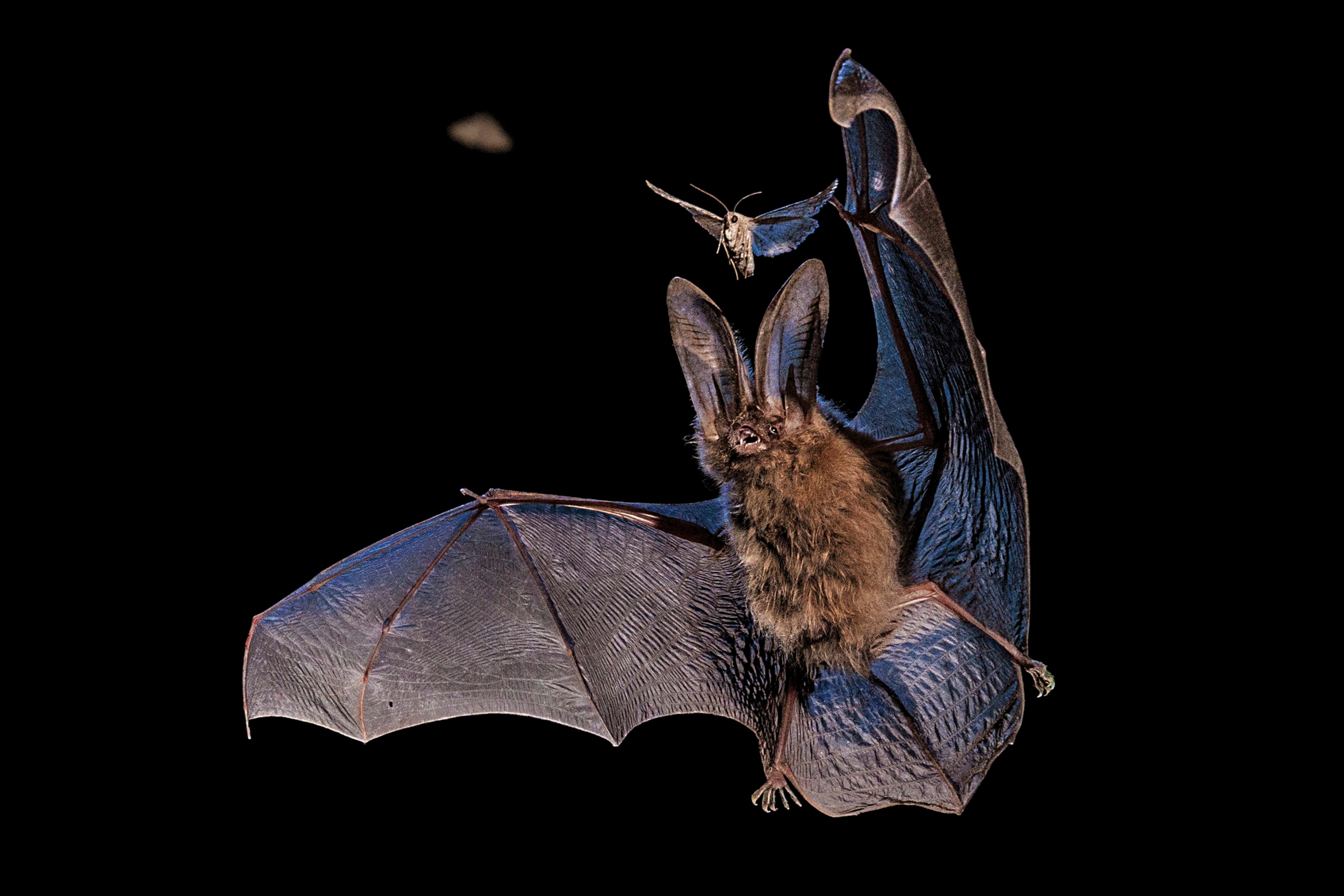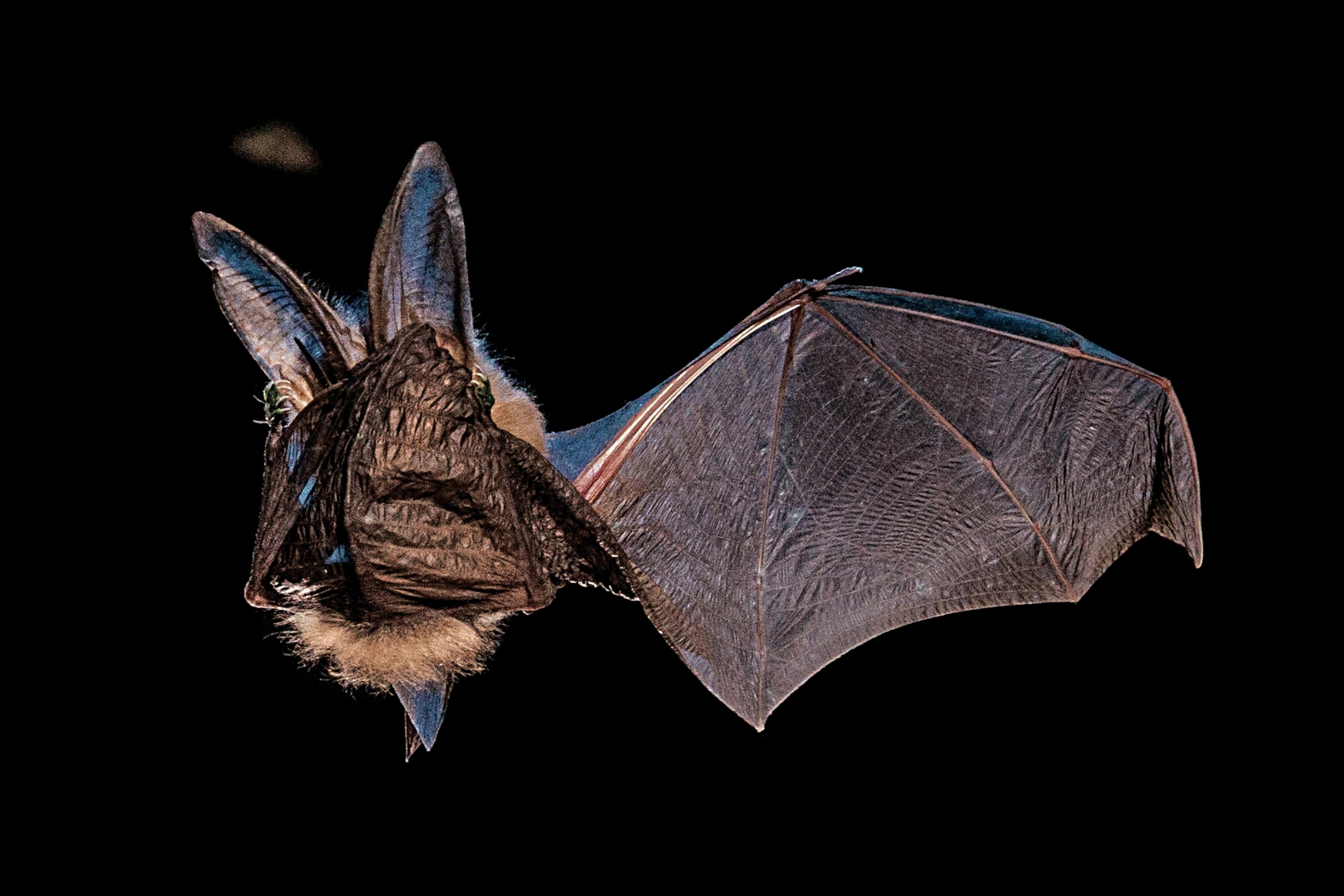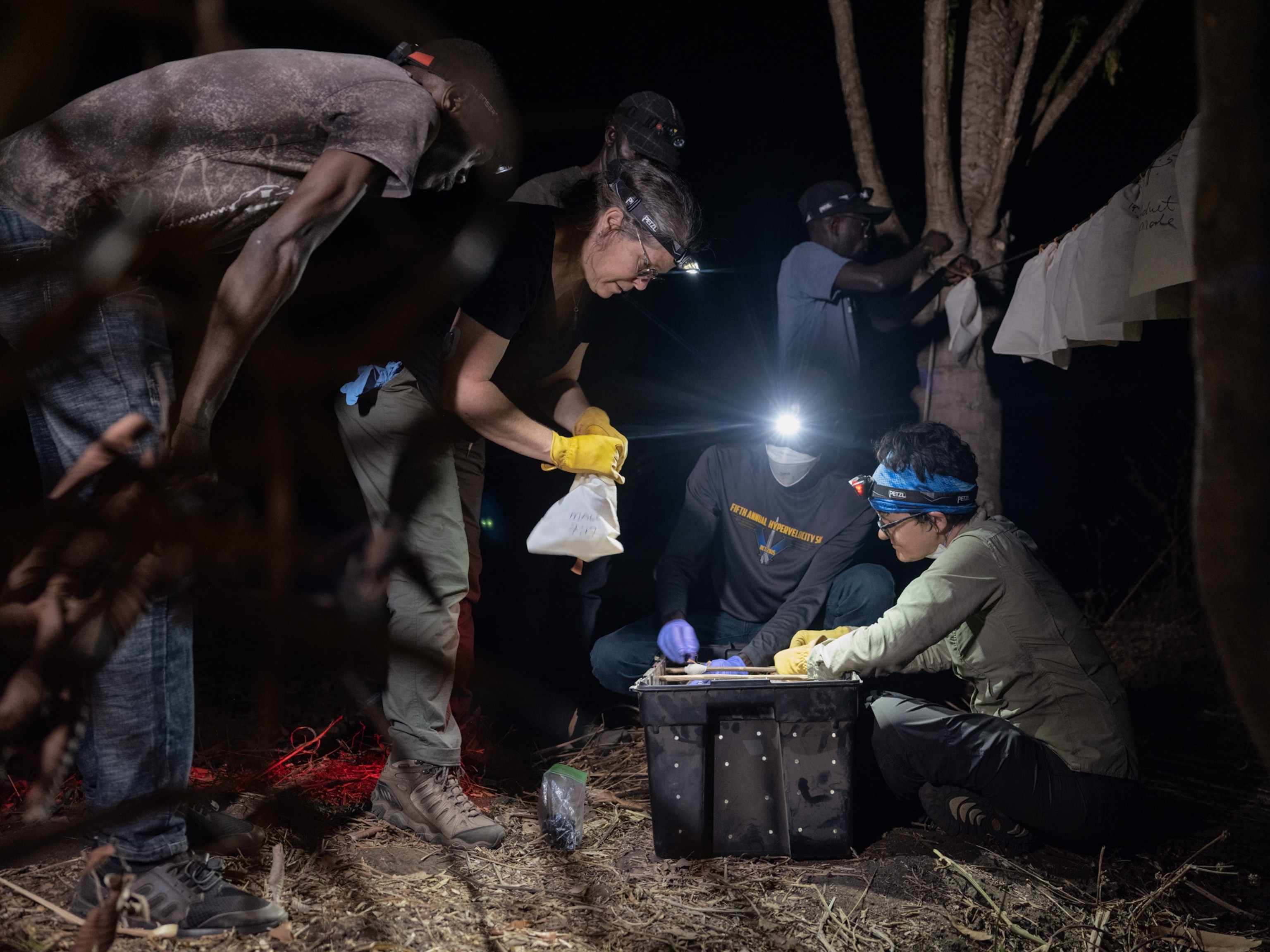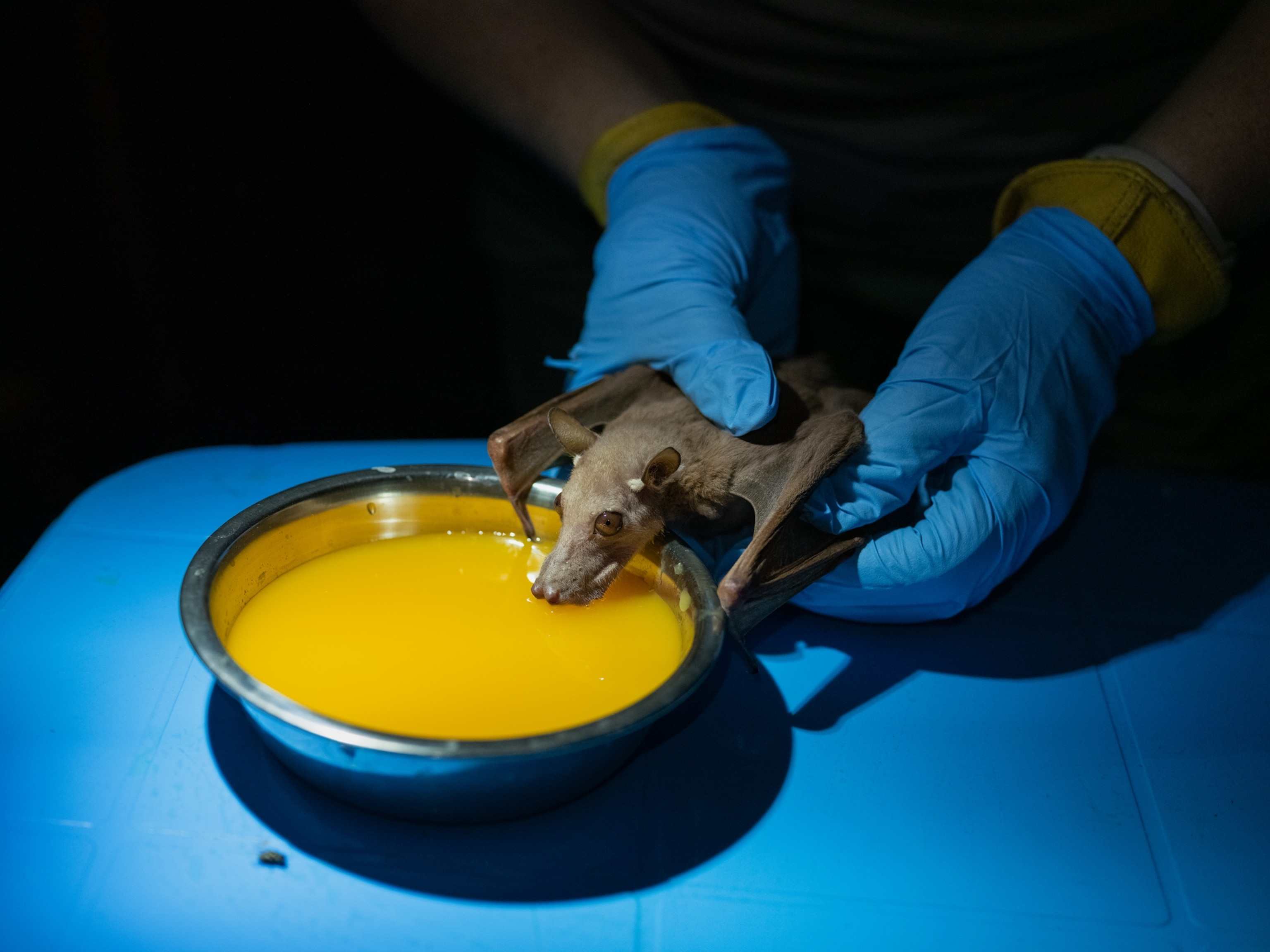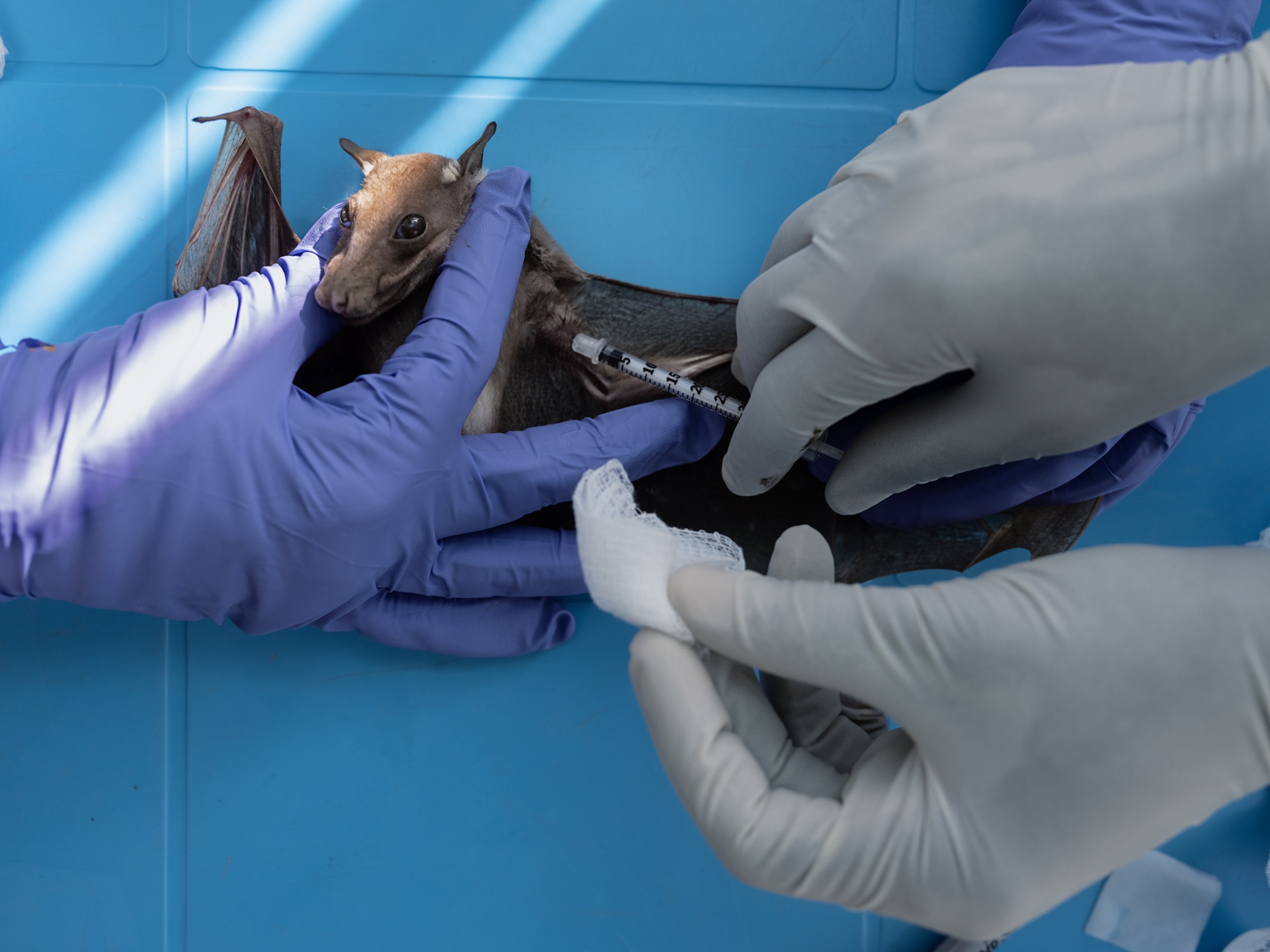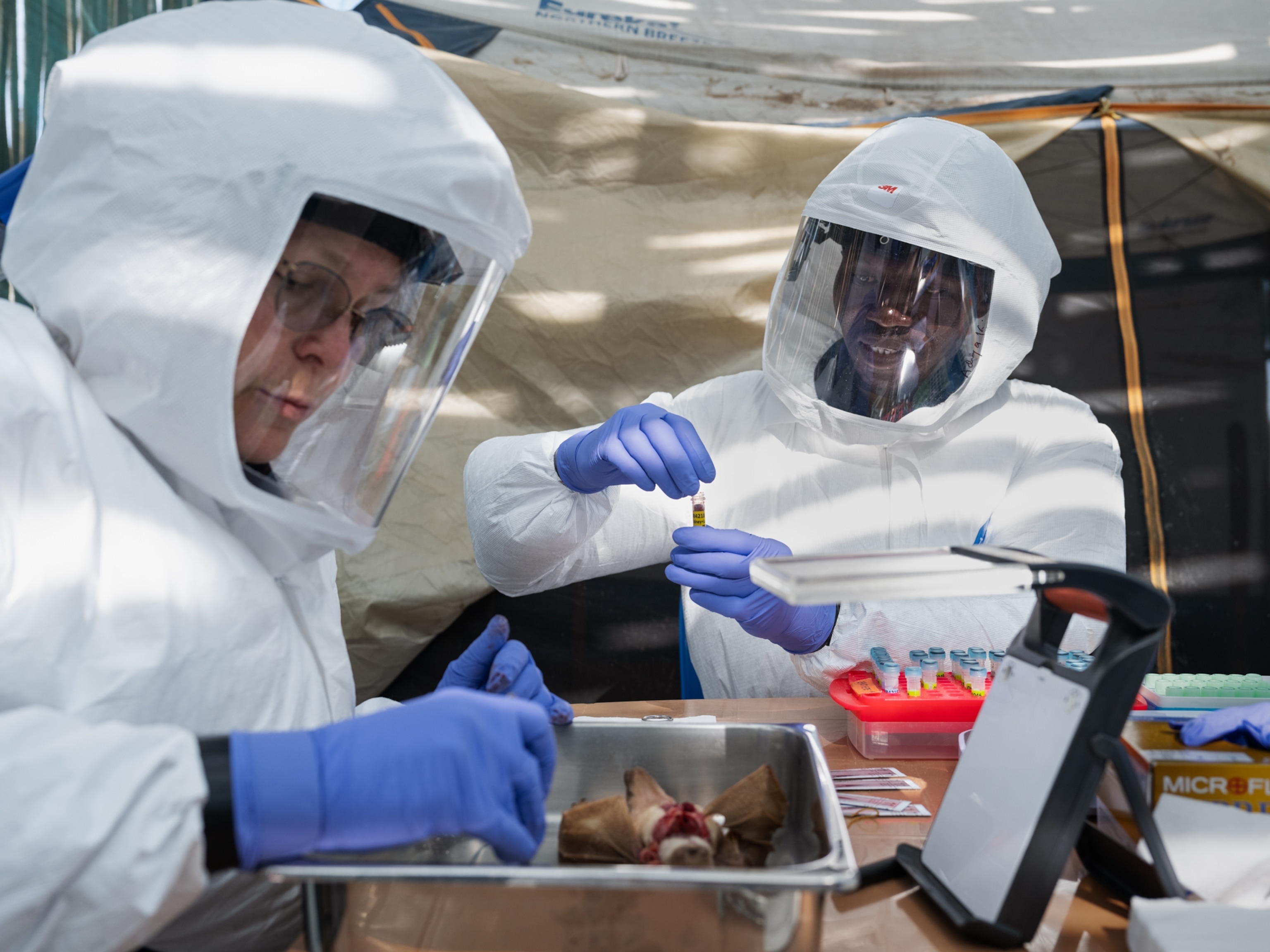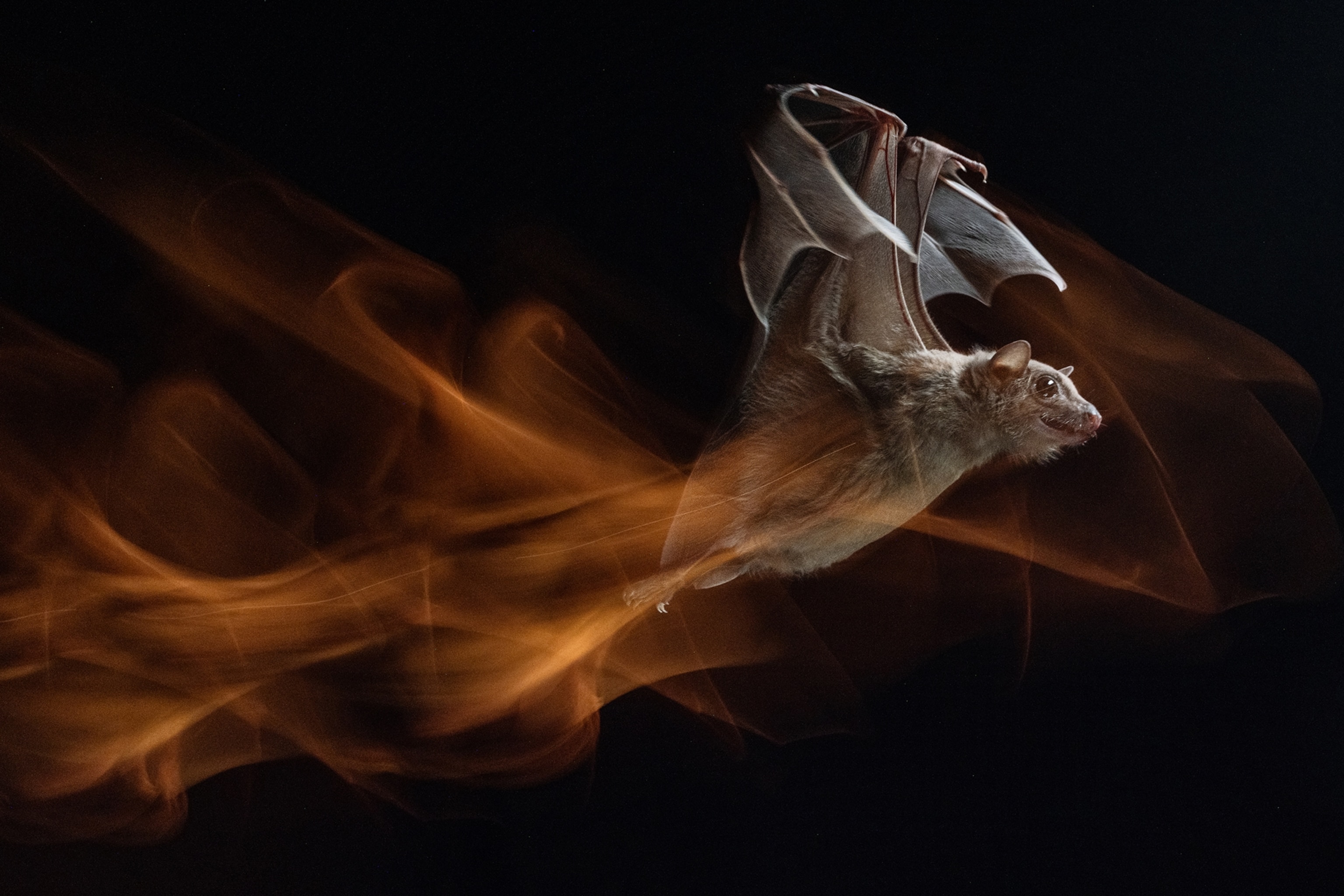
Bats have disease-defying superpowers. What if we could copy them?
They fly like no other creature on Earth, survive for decades, and rarely get cancers. Learning their secrets could lead to new advances for human use.
Not everyone falls in love with bats, but those who do fall hard.
As a young scientist, Sharon Swartz studied gibbons. But she was intrigued by the fine skeletal structure of bat wings and by the evolutionary trade-offs necessary for mammals to take flight. So she took a detour from her primate research and traveled to Australia to study the large bats known as flying foxes.
She recalled one evening when she visited a suburban golf course where roosting bats filled the trees. First one, then a few more, then hundreds of the creatures lifted off as the sun set until, she said, there was “a river of bats in the sky.” The next night Swartz, now a professor of biology and engineering at Brown University, and her colleague trapped bats in nets, and she held one for the first time. It was a flying fox with a wingspan of several feet. “My heart was racing. It felt like I had never seen anything so beautiful.”

The more common reaction is probably an involuntary shudder. Bats have long been associated with darkness and evil in Western culture, and unsettlingly hard to place in folk taxonomy—not birds but airborne, not rodents but small and furry. And, for some species, disturbing in close-up. The poet Theodore Roethke wrote, “something is amiss or out of place / When mice with wings can wear a human face.”
Some people just find them creepy. Others worry about the diseases they may carry, including those similar to the virus that caused the COVID-19 pandemic. To be fair, dogs with rabies kill vastly more humans than bats do, and the flu virus passes through ducks and pigs, but none of these animals elicits the same dread. The writer D.H. Lawrence lapsed into a kind of know-nothing distaste when contemplating bats “hanging upside down like rows of disgusting old rags.” One might have hoped that the author of the scandalous Lady Chatterley’s Lover would be more open-minded, but no. “In China the bat is symbol for happiness,” he wrote. “Not for me!”
For true bat appreciation, even evangelism, biologists like Swartz and her colleagues have no competition. Many have the zeal of converts who at some point turned from other mammals to find a wonderland of scientific mysteries, like bats’ impossibly acrobatic flight, their remarkable longevity, or their enviable resistance to most cancers. Scientists worldwide are probing these secrets. Some hope to turn insights into these animals to human benefit. Others are simply captivated by their breathtaking diversity and evolutionary history. They would like you to know, queasy poets notwithstanding, that bats are so much more than flying mice.
YEAR-LONG ADVENTURE for every young explorer on your list
FREE limited-edition frog drawstring bag with every Nat Geo Little Kids Book Bundle subscription
(To save Yosemite’s bats, scientists need help finding them.)
Bats are one of evolution’s great success stories. Their ancestors were small mammals that scurried on all fours and probably lived on an insect diet, as many bats do now. How those ancestors came to fly is an unsolved mystery. The oldest known bat fossils—from the Green River geological formation in Wyoming, dating to more than 50 million years ago—already show the transformed forearm and fingers that form the scaffolding for the thin, muscular membrane of the bat’s wing. Thus the Latin name for the order of bats, Chiroptera, meaning “hand wing.”
Once bats had taken flight, they filled every ecological niche available to winged creatures and spread around the globe. One-fifth of all mammal species are bats. Only the order of rodents has more members. Bats eat everything: insects, fruit, nectar, blood, and fish. They range in size from the bumblebee bat, weighing in at less than an ounce, to the biggest flying fox, a fruit bat with a nearly six-foot wingspan and weighing up to three pounds. Some species are solitary, but many are social. They live in vast colonies and in small groups, roost in trees and caves and attics and behind house shutters. They are an integral part of just about every ecosystem. They consume mosquitoes and agricultural pests, and pollinate plants like bananas, mangoes, avocados, and durians, the notoriously odorous and economically important Asian fruit. Not to mention the prized agaves of the Sonoran Desert. In short: No bats, no tequila.
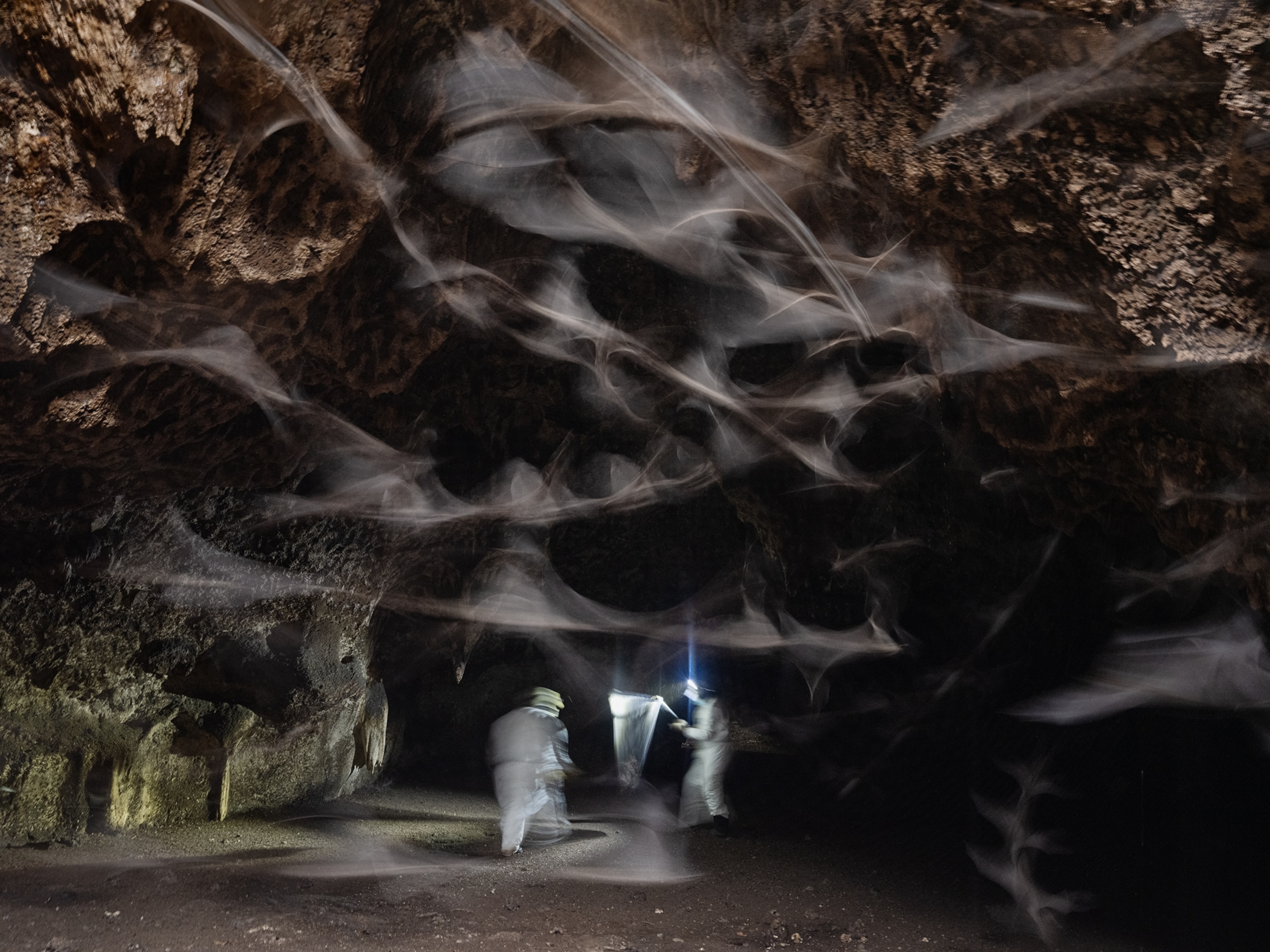
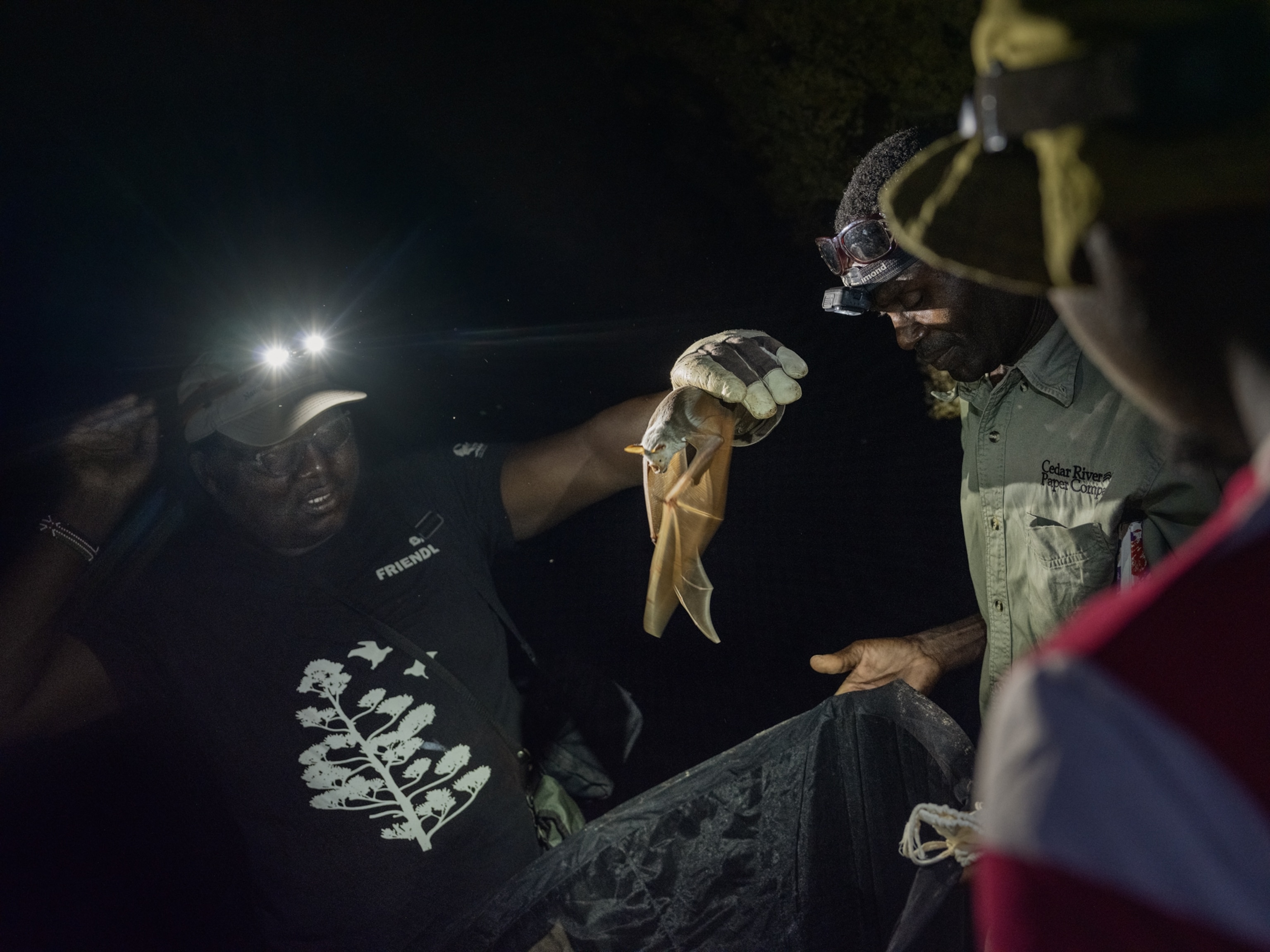
And they fly like no other creature, which is what first drew Swartz to that Australian golf course more than 30 years ago. At the time, she was studying the mechanics of movement in primates, looking at how skeletons evolved to balance the need for strength with the disadvantages of heavier bones. “It seemed obvious that weight is a problem for flying animals in a way that it isn’t for anybody else,” she said. “The structure of these limbs magnetized me in a way that no primate limb ever had.”
(52-million-year-old bat skeletons are the oldest ever—and tell a ‘really weird’ tale.)
Because bat wings are made of skin stretched on light bones with many joints, they interact with the air in ways that are not possible for less flexible bird and insect wings. Bird wings have three joints, roughly corresponding with the human shoulder, elbow, and wrist. “Bats have almost as many joints in the wing as we have in a human hand,” Swartz said, “and they also have these crazy muscles that are embedded in the skin.” Bat wings are covered with countless tiny hairs that sense shifts in airflow. They are in constant conversation with the air, changing shape, creating lift, responding with idiosyncratic invention to each puff and gust: In tests that Swartz and her team ran to present a challenge to normal flight patterns, they found that when they injected a saline solution into bats’ abdomens to mimic the weight of a big meal, each animal responded in a different way. Dimitri Skandalis, who studies this extraordinary individual variation at Johns Hopkins University, compared the complexity of bat wing movement to human facial expressions. All smiles are recognizable as smiles, but no two are exactly the same.
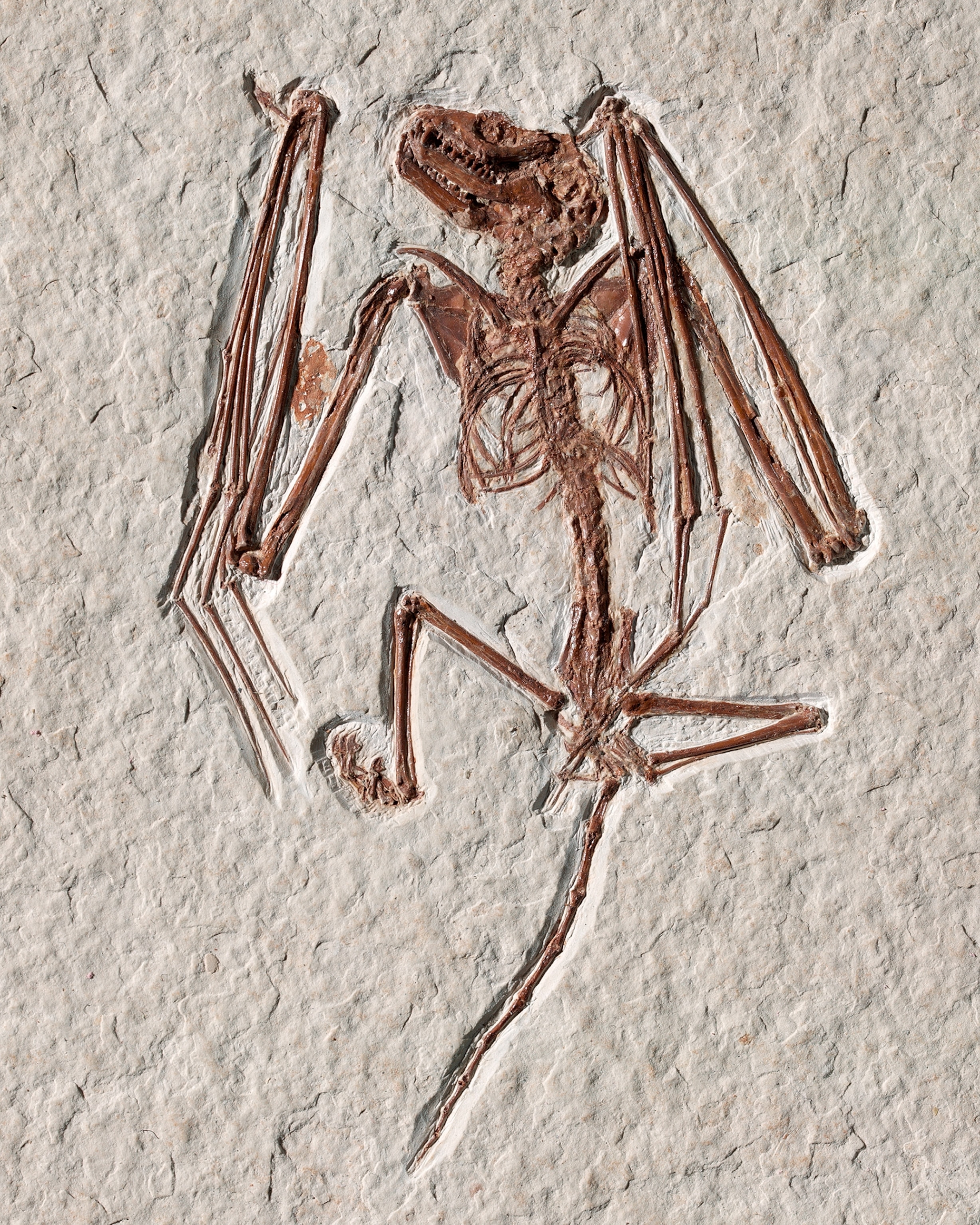
Could this intricate, intuitive movement be replicated in a machine? Bat flight is “dancing in the air,” said Alireza Ramezani, an assistant professor of engineering at Northeastern University. “For me, creating a drone that looked like that was exciting.” Inspired by Swartz’s experiments, he took on the challenge of creating bat robots. With the flexibility of hands and the stretchiness of skin, bat wings can cope with rapid and complex shifts in airflow, particularly those that exist inside confined spaces.
(Do bats take flight during a solar eclipse? Here’s what we learned.)
“There’s so many challenges from an engineering design standpoint. How can you have all these components inside a system, a drone that weighs a hundred grams?” One of the keys to understanding and replicating bat flight, Ramezani said, is that bats do not consciously make every split-second decision. The soft tissue of bat wings deforms and reshapes in response to air pressure without needing direction from the brain’s air traffic control center—an example of what engineers call passive dynamics. As bats move their major wing joints, the membrane of the wing transfers that movement to the smaller joints, and the stretchiness of the wing responds to the flow of air against it. “In bats,” said Ramezani, “you have the locomotion characteristics of jellyfish and the locomotion characteristics of birds.”
Although the beauty and complexity of bat flight first caught his attention, Ramezani said, the potential usefulness of a bat drone helped drive the project forward. Building on Swartz’s findings, he and his team created a soft-bodied robot that can navigate in environments where quadcopter drones, now ubiquitous in peace and war, can’t. In the United States alone, he said, there are more than a million miles of sewer lines that are difficult or dangerous for humans to inspect and monitor. And there are caves to explore, for mining and paleontological or archaeological research. What better place to send a bat robot than a small, dark cave, in search of ancient bones or artifacts?
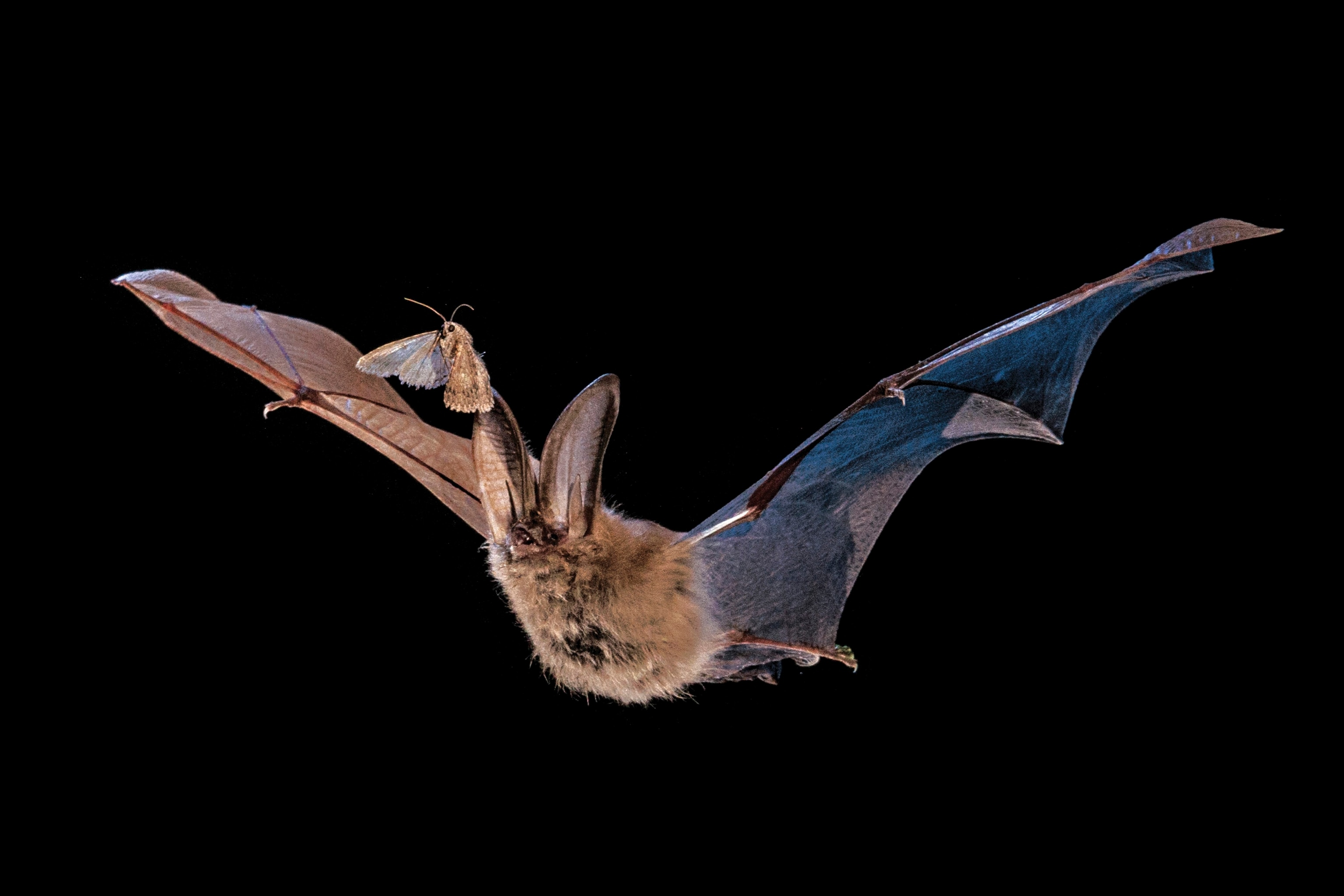
Emma Teeling, like many of her colleagues, came to bats “completely, utterly, and totally by chance.” Teeling is a co-founder of Bat1K, a project to sequence the genomes of all 1,400 or so species of bats, and one of the founding advisers of Paratus Sciences, a start-up devoted to mining bat biology for ways to fight human diseases. “We believe,” its website states, “that bats hold the key to a safer and healthier world.”
After initially working with foxes and deer, Teeling wanted to do a Ph.D. on mate choice in domestic cats and was trying without success to persuade various labs to take on her project. But, she said, there was a fully funded position in Belfast, Ireland, using genetic comparisons of living bat species to trace the evolution of echolocation. She applied, got the spot, and “literally, within six weeks, I got hooked.” She quickly became fascinated by the weird biology of bats. Live small, die young is the general rule for mammals. But bats the size of mice can survive for decades. “They live for a ridiculously long time,” for their size, she said. They rarely get cancers. “They can carry all these viruses without getting sick.” Teeling, now a professor at University College Dublin, had to know why.
The answer she has become more and more convinced of over the years is one that at first blush seems hard to comprehend: They fly. Her hypothesis is that flight led bats to evolve unusual immune systems, which in turn led to longevity, even resistance to cancer.
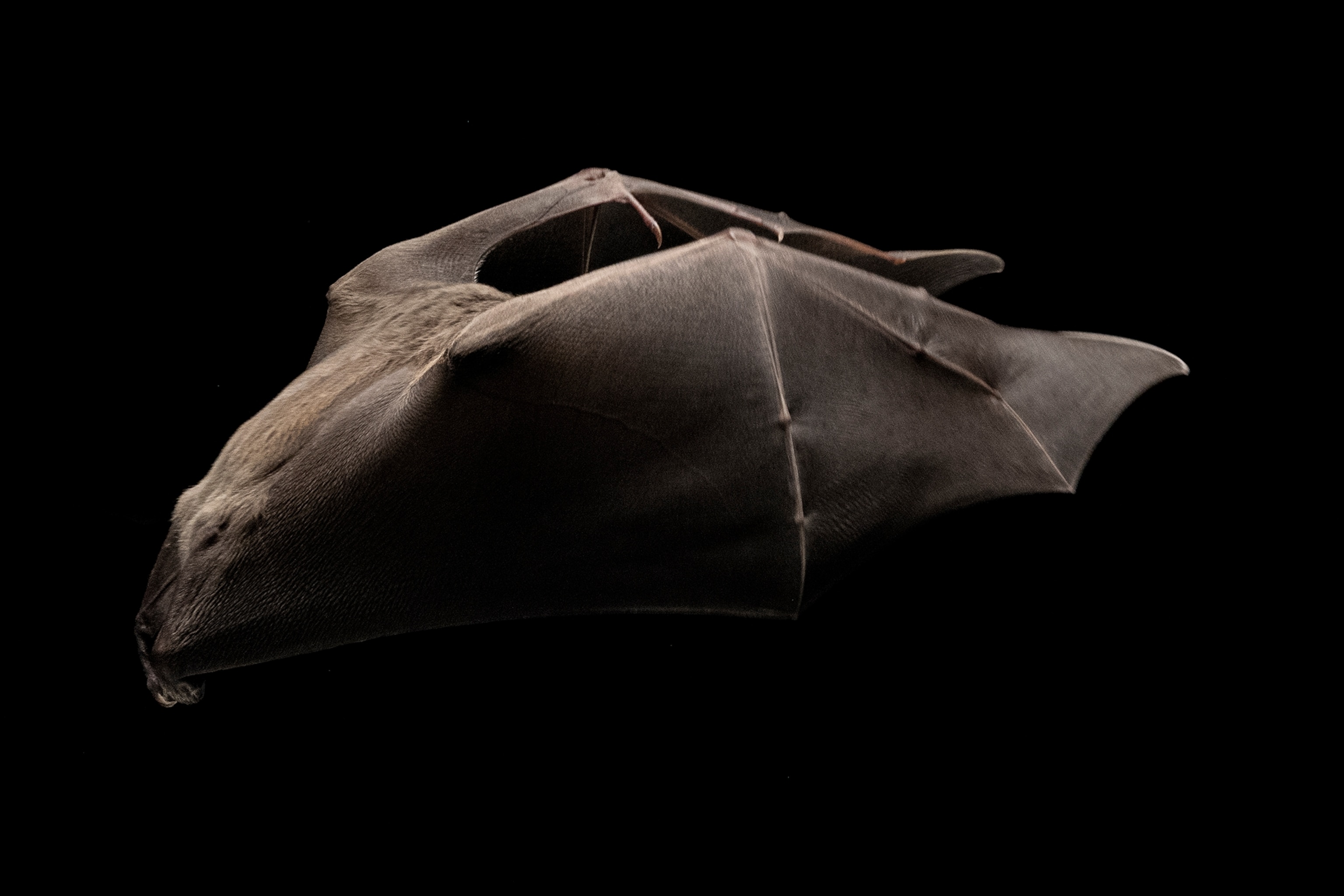
Bats need to burn a lot of fuel to catch bugs on the wing, to dive and pitch and roll like a scarf in the wind. One study estimated the metabolic rates of flying bats to be three to five times those of similar size land mammals. Cellular engines called mitochondria have to work overtime to produce energy for flight. As a side effect, they also produce chemicals called free radicals that are known to harm DNA. “We should see this high level of damage” to DNA in bats, Teeling said. But in experiments, that is not what she and her colleagues have found. In fact, they discovered that as the bats they studied aged, their ability to repair their DNA increased.
Another side effect of energy production in flight is that the mitochondria break down, and the results can look to the immune system like foreign invaders. So flight could produce a surging immune response—and inflammation. Bats would need to control that. Studies have shown that they not only respond to viruses that infect them, but they also tamp down that response, avoiding a damaging overreaction. That could also have evolved as a result of flight.
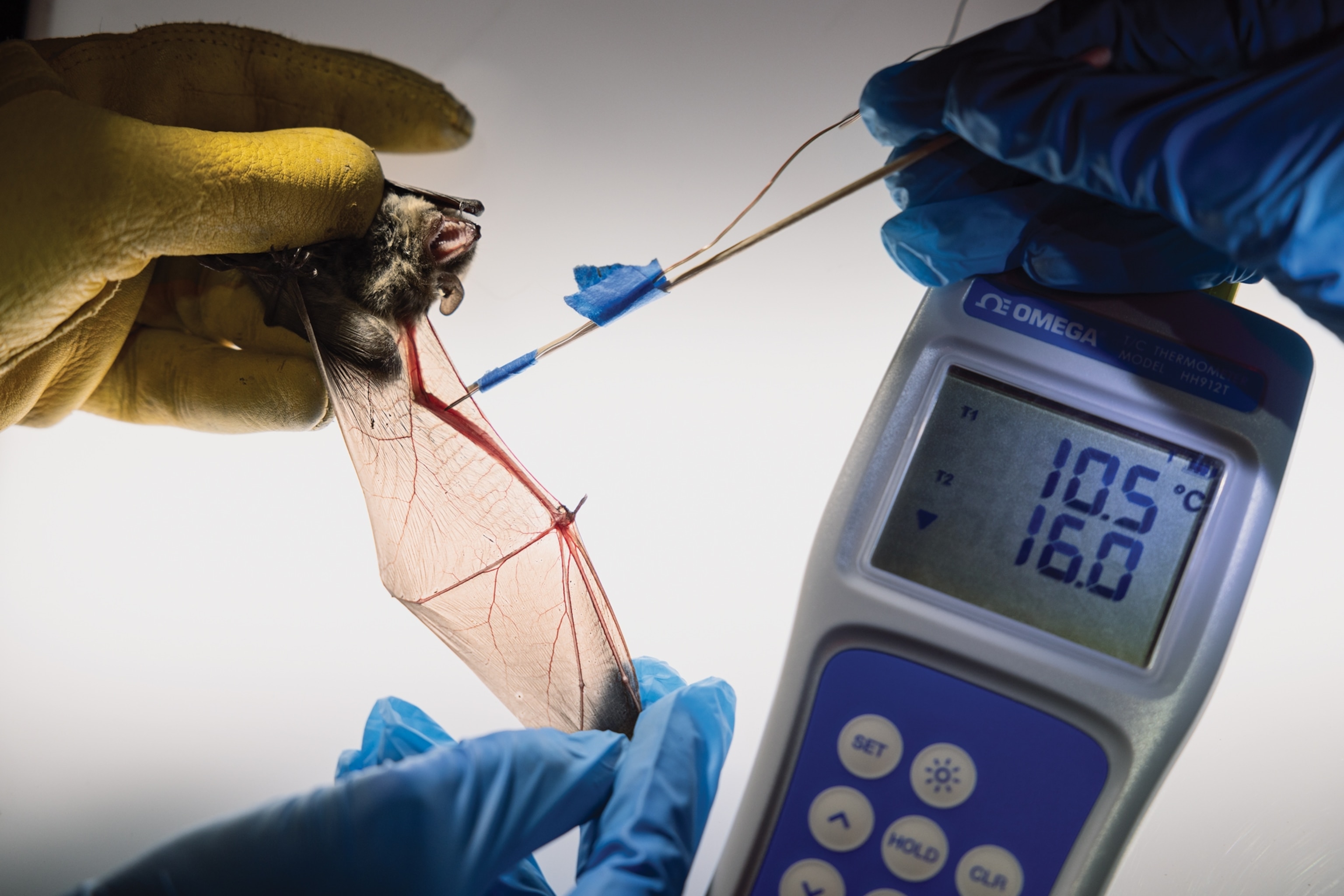
The connection is far from proven, and there are plenty of skeptics, Swartz among them. “I’d be more confident in that line of reasoning if we saw enhancements of immune function and longevity in other animals that have elevated metabolism, like birds or migratory mammals,” said Swartz. Teeling said that, actually, many birds do live longer than might be expected given their size. She noted that in one survey of many species, the single best predictor of long life was the ability to fly. She recognized, however, that this kind of correlation is far from proof and that more investigation is needed—the Bat1K project’s genome sequencing, for instance. By comparing the genomes of many bat species, scientists can see what they have in common, pinpoint which genes are active in DNA repair and immune activity, and calculate when those abilities might have evolved. If they came with flight, that would be a strong indication that the two are linked.
(Tiny bat makes record-shattering flight with 1500-mile migration.)
Whatever led bats to tolerate certain deadly viruses, a number of researchers are searching for genetic insights. Several immunity-related bat genes have been identified, and some have been experimentally transferred to other species, where they provide the same benefits. For instance, lab mice engineered with a bat gene showed resistance to bat influenza. Beyond bat flu, researchers wonder if there is an immunological advantage that all bats have, that works with viruses in general, or if disease resistance depends on the species and its history of exposure to specific viruses. Some species are reservoir hosts, meaning viruses live within the animal without causing disease. Presumably, a reservoir host would have a different reaction than a related species that is not usually exposed to the virus.
Ebola is a classic example. It is devastating to humans and some other mammals, and most scientists suspect that bats are the natural reservoir. Some bat species show evidence of exposure when their blood is sampled, while others do not. In Uganda, a team of U.S. and Ugandan scientists is using detailed tests of gene activity to find out precisely how different bats respond to Ebola (or, more specifically, to a noninfectious fragment of Ebola virus).

“Bats are extraordinary and amazing,” said Bucknell University’s DeeAnn Reeder, the team leader. “I want to understand how the heck they do all the things that they do, and their immune system is a piece of that. They’re exceptionally good at managing those pathogens to avoid illness themselves.” She and her Bucknell colleague Ken Field and Imran Ejotre at Muni University are trapping and immunizing bats with Ebola proteins in hopes of seeing exactly how the immune systems of different species cope with a viruslike threat.
One species that Reeder and her colleagues are studying is the little epauletted fruit bat. Researchers have found signs of exposure to Ebola viruses in this species and its relatives, suggesting that they may have coevolved with these viruses. That could mean they have a greater ability to tolerate infection. Another species, the green house bat, shows no indication of living with Ebola. Researchers sample the blood and tissue of immunized bats, as well as control groups, to see which genes are active, and how active, after a first injection and a booster shot.
For the bats that seemed to have coevolved with some pathogens, Field said, “these viruses do not kill these bats. They don’t even make them sick.” Comparison with other bat species could pinpoint the immune strategies of resistant bats. Then the question with an enormous payoff is whether human biology could be manipulated to act in the same way. For instance, during the COVID pandemic, one of the things doctors noted in ill patients was a cytokine storm, a burst of proteins that caused such severe inflammation that patients died. What if scientists could find a way to mimic the immune systems of bats with a drug?
For the scientists who study and love them, bats are not only scientific treasures but also living beings that are at once so like us—with their hand wings, warm blood, and live birth—and yet irresistibly alien. Inevitably, students of bats become protectors of bats.
Tigga Kingston at Texas Tech University, who studies Southeast Asian bats and is deeply involved in bat conservation research, said that despite the great evolutionary successes of bats, they have many vulnerabilities. For instance, though they may seem like flying mice, rodents breed early and often, having multiple litters a year. Bats start reproducing later than rodents, in their second or even third year, and have one offspring a year on average. Naturally, not all of those survive. “As a consequence,” Kingston said, “anything that disturbs their populations is difficult for them to recover from.” More than 200 species around the world are listed as threatened.
(Etsy and eBay are selling dead bats—and scientists are disturbed.)
Bats are subject to all the problems of habitat loss and human encroachment that plague other species, along with some peculiar to them. White-nose disease has killed vast numbers of North American bats. Overharvesting of agave plants threatens nectar-feeding bats. And there is climate change. Some of the most at risk from a warming planet are large fruit bats, like those in Australia. They don’t roost in caves but in the open, and extreme heat can kill them. “When it hits around 42° to 44°C [108° to 111°F], depending on the species, they just die of heatstroke,” Kingston said. Mass die-offs have pushed some species that were doing well only 10 or 15 years ago to endangered status.
For defenders of bats, the first priority is to have good information on the populations themselves. Paul Webala, wildlife biologist at Maasai Mara University and a National Geographic Explorer, is building an acoustic library of the calls of Kenyan bats that he said could be a game changer in knowing the status, movements, and locations of different species. Bat Conservation International supports multiple efforts to monitor threatened species, but it is also working on projects of immediate benefit, such as reducing bat deaths from wind turbines.

In the U.S. hundreds of thousands of bats die each year from wind turbines, said Rodrigo Medellín, a senior professor at the National Autonomous University of Mexico’s Institute of Ecology. A National Geographic Explorer at Large, Medellín co-chairs the Bat Specialist Group, part of the International Union for Conservation of Nature’s Species Survival Commission, with Kingston. Over 60 percent of those deaths could be avoided, he said, if the industry would agree to start up the turbines at a wind speed of five or six meters a second instead of three meters a second, resulting in a “tiny loss of efficiency.”
Protecting roosts is also a top priority for Medellín. He recently lobbied to divert the path of the Maya Train, a $20 billion tourism project in the Yucatán, away from the famed Volcán de los Murciélagos. The “bats volcano” is the most populous roost from central Mexico to southern Argentina. About three million bats emerge from it each night to feed on insects.
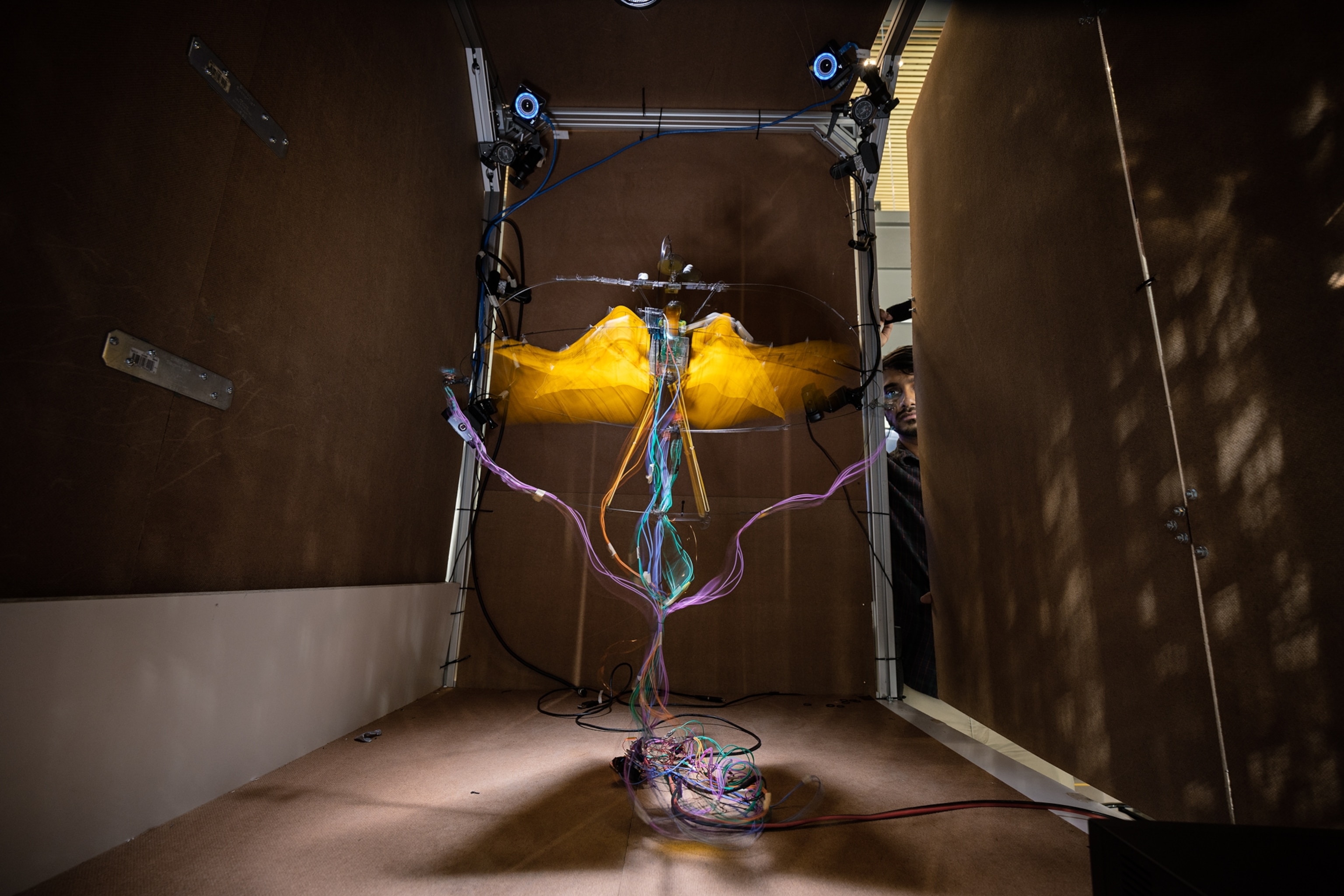
It is just not fair, said Medellín, that such useful animals should have such a bad reputation. “We really owe it to bats to treat them right. And what do they ask?” he said. “Just leave them alone. That’s all.” In terms of convincing the public of the value of bats, scientists often mention their role in pollinating wild plants and crops and in eating insects, natural pest control worth billions of dollars a year in the U.S. But what about bats as bats, pure and simple? Kingston, who switched her focus from rodents to bats as an undergrad, is wary of placing too much emphasis on the practical value of wildlife. “What if there’s a species that we can’t pinpoint exactly what it’s doing for the ecosystem?” she asked. Are we going to leave it off the list?
It is not a hypothetical question. So much about bats remains unknown. As much as we are learning about them, they are in some ways still undiscovered. And their mystery is as compelling as their usefulness. After 30 years, Swartz said, she still is moved when she steps into a space with the creatures and feels “the rustle of those wings and that breath of air as the animal is going by.” One reason: “There are more unanswered questions than things that I understand.”
A former science reporter for the New York Times, James Gorman has written numerous stories about bat flight and bat life. He now competes with big brown bats for use of his front porch in upstate New York.
An Explorer since 2021, Nichole Sobecki is a Nairobi-based photographer who specializes in humanity’s connection to the natural world. She documented cheetah trafficking through Somaliland for our August 2021 issue and Sudan’s ancient past and uncertain future for the January 2022 magazine.
